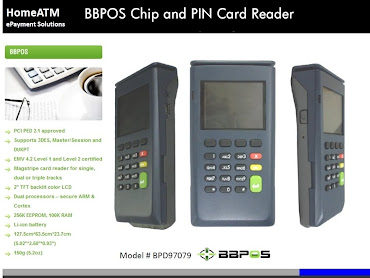Debit Rewards on the Increase, Increased Interest in Alternative Payments...
PULSE is pleased to make available to its participating financial institutions an executive summary of the 2008 Debit Issuer Study. The study, conducted by Oliver Wyman, is the third comprehensive debit industry analysis commissioned by PULSE.
The 2008 Debit Issuer Study explores debit card issuer performance in a variety of areas, including transactions, interchange, rewards, fraud, ATMs and prepaid cards. In addition to these performance metrics, issuers commented on key opportunities and challenges anticipated for 2008.
The 2008 Debit Issuer Study explores debit card issuer performance in a variety of areas, including transactions, interchange, rewards, fraud, ATMs and prepaid cards. In addition to these performance metrics, issuers commented on key opportunities and challenges anticipated for 2008.
Access to proprietary research such as this is one of the important benefits of PULSE participation. To obtain your copy of the 2008 Debit Issuer, click here. (login is required).
Here's an overview:
"Surcharge-free ATM access is gaining in popularity among debit card issuers as they explore new ways to better serve cardholders, according to the 2008 Debit Issuer Study, commissioned by PULSE. Financial institutions also are increasingly offering debit rewards.
The 2008 Debit Issuer Study, conducted by Oliver Wyman, provides new data and comparisons to the results of the 2007 Debit Issuer Study, released in February 2007. This comprehensive survey offers a revealing look at debit issuer performance, debit card trends and the latest debit technologies and service offerings.
“Although growth in debit use remains strong, debit card issuers are broadening their electronic payment services to include new payment devices, targeted cardholder perks such as surcharge-free programs, and greater levels of service,” said Cindy Ballard, PULSE executive vice president. “Based on survey responses, we expect this trend to continue over the coming years.”
A total of 62 financial institutions participated in the study, including large banks, community banks and credit unions that collectively issue more than 74 million debit cards, or 28 percent of U.S. debit cards. The institutions also represent 46,000 ATMs and are balanced across institution size, type, geography and network participation.
ATMs
Among issuers surveyed, 56 percent have cards that participate in a surcharge-free ATM network, while 84 percent of credit union respondents offer surcharge-free ATM service to their members for certain “off-us” transactions (transactions made by an issuer’s debit cardholders at ATMs owned by other issuers or organizations). Additionally, many financial institutions (48 percent of respondents) offer reimbursement of ATM surcharges, but usually to only a portion of their cardholders. Of the institutions that reimburse ATM surcharges, 45 percent limit total monthly per-cardholder reimbursements.
Other findings related to ATM programs included:
ATM transaction activity is increasingly “on-us” (transactions made by an issuer’s debit cardholders at the issuer’s ATMs), further limiting cardholders’ exposure to surcharges.
“Active” debit cardholders (most commonly defined by respondents as those that have made a signature debit transaction within the past 30 days) perform an average of 3.4 ATM transactions per month.
Heavy ATM users also tend to be heavy debit card users, implying that cardholders do not consider the “cash back” option often available with PIN debit transactions at the point of sale as a substitute for ATM withdrawals.
Debit Rewards
Offering a debit rewards program can have a variety of benefits for card issuers, including an increase in transaction volumes, differentiation from competitors and promotion of debit card use.
The availability of debit rewards has increased significantly since the previous PULSE study, with 51 percent of respondents now offering rewards, compared to 37 percent in 2006. An additional 23 percent of issuers surveyed say they are considering adding a rewards program.
The increase in debit rewards is driven mainly by a growing interest in cash rewards, which are now offered by 42 percent of respondents that have debit rewards programs, compared to 16 percent in 2006. Points-based rewards are the most common program type, offered by 58 percent of the institutions that have programs. Merchant-funded rewards programs are gaining in popularity and far out-pace other program types in terms of cardholder engagement (83 percent).
“Cardholder engagement remains a key challenge for debit rewards,” said Tony Hayes, an Oliver Wyman partner, who served as project lead on the study. “A sizeable portion of institutions we surveyed are planning to revamp their rewards programs in 2008 to generate greater customer participation and increased return.”
Emerging Payments
The 2008 survey is the first Debit Issuer Study to address emerging payments technologies. Although all emerging payments options have benefits, each faces significant growth challenges, says Hayes:
Contactless cards – Ten percent of respondents currently offer contactless debit cards (cards equipped with a device enabling the user to tap the card rather than swipe it). Another 35 percent say they plan to introduce this capability in the future. Of those that offer contactless, only 24 percent of their cardbase is contactless, on average. Key barriers to contactless adoption are low merchant acceptance, unfavorable cost/benefit ratios and low demand.
Mobile banking – Fifteen percent of respondents currently support mobile banking, and another 28 percent say they are planning to introduce it “soon.” With the technology still in a state of development, most issuers are taking a measured approach.
Mobile payments – Mobile payments (the technology includes mobile phones equipped with payments-enabled chips, as well as message-based payments) is largely in the research phase, with 56 percent of issuers exploring the possibility of implementing it.
“The 2008 Debit Issuer Study offered intriguing insights into financial institutions’ interest in and adoption of emerging payments technologies,” said Ballard. “In the coming years, increased use of such technologies will play a key role in helping issuers grow their electronic payments businesses.”











0 comments